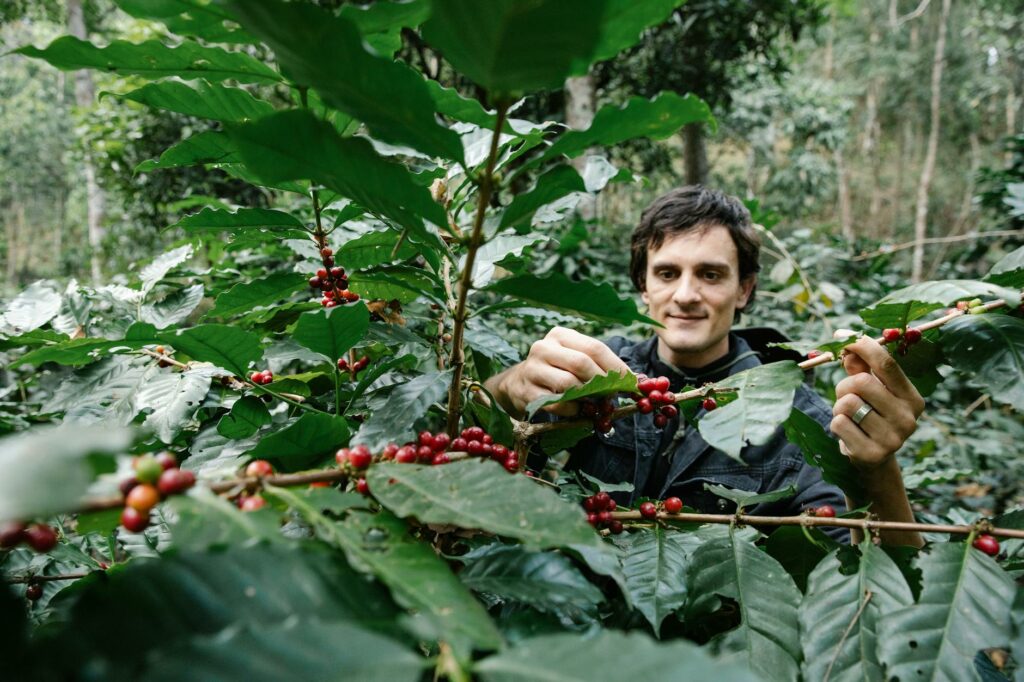Table of Contents
Coffee is one of the world’s most beloved drinks, fueling mornings from Seattle to Sydney. But every sip carries a story that stretches far beyond our mugs. The way coffee is grown, harvested, and processed can make a huge difference to both the environment and the lives of those who farm it. Sustainable coffee practices aim to keep forests standing, water clean, and communities thriving—making your daily ritual part of a bigger solution.
Core Sustainable Coffee Practices

Sustainable coffee farming blends tradition, smart science, and respect for nature. Four standout methods—shade-grown coffee, organic farming, agroforestry, and water conservation—are changing how coffee is produced worldwide.
Shade-Grown Coffee
Shade-grown coffee isn’t just about picturesque farms. By cultivating coffee under tree canopies, farmers protect local wildlife and boost plant diversity. Shade trees also help trap moisture in the ground and prevent soil erosion during tropical downpours.
Better for birds and bees, shade-grown beans often develop richer, more complex flavors. It’s like giving coffee plants their own umbrella, keeping them cool, happy, and productive year after year.
Organic Farming Methods
Growing coffee without synthetic chemicals or pesticides means relying on nature’s own systems to keep crops healthy. Farmers use crop rotation and composting to boost soil nutrients, while beneficial insects and birds manage pests naturally.
This approach keeps rivers and soil clean, safeguarding the health of communities and ecosystems. For coffee drinkers, organic beans often promise a purer, more authentic taste.
- Crop rotation: Avoids soil exhaustion.
- Composting: Returns nutrients back to the earth.
- Natural pest control: Reduces the risk of chemical runoff.
Learn more about sustainable approaches from real farms at Sustainable Coffee Farming and Storing.
Agroforestry and Crop Diversification
Agroforestry combines coffee with native trees, fruits, or other crops on the same land. This patchwork of plants works like a team, sharing resources and standing guard against storms or disease. Deep tree roots prevent erosion, and fallen leaves return nutrients to the soil.
Crop diversification helps farmers hedge against risk. If one crop fails, others can fill the gap, bringing in steady income and food security for families. Agroforestry also offers shelter for wildlife and stores carbon, fighting climate change along the way.
For a closer look at such innovations, check out this overview on sustainable coffee farming.
Water Conservation and Processing Innovations
Processing coffee can use a lot of water, but forward-thinking farms are cutting back with new tools and strategies.
- Rainwater harvesting: Collecting and using rain saves water for the dry season.
- Recycling and filtration: Treats processing water for reuse or safe release.
- Efficient irrigation: Drip lines deliver just enough moisture, right where it’s needed.
- Waste management: Smart tech, like energy-efficient pulping machines, cuts water use and emissions.
The result is less pressure on aquifers and rivers — and a smaller environmental footprint with every cup.
Get more tips about coffee’s green transformation from 9 tips to go green in the coffee sector.
Sustainability Certifications, Technology, and Market Impact
Beyond the farm, global programs, new tech, and changing shopper habits are pushing sustainability from buzzword to baseline in the coffee sector.
Certification Programs: Standards and Benefits
Certification labels like Fair Trade, Rainforest Alliance, and Organic signal that a coffee meets strict rules on ethics, fairness, and eco-friendly growing.
These programs set standards for soil health, water use, worker safety, and fair pay. When you see these labels, you know your coffee supports better conditions for farmers and less harm for the earth.
Many consumers are willing to spend a little more for certified products, which encourages more farms to get involved. Learn how certification shapes the world of coffee at the Masters of Coffee: Education & Certification Body for Coffee.
Technological Innovations for Coffee Sustainability
Technology is helping coffee stay ahead of climate challenges and market needs.
- Climate sensors track weather and soil data to help farmers plan and adapt.
- AI-powered tools monitor crop health and optimize harvest timing.
- Traceability platforms let buyers and customers check where and how coffee was grown.
- Renewable energy solutions in drying and milling reduce fossil fuel use and emissions.
Learning more is possible through the SCA Coffee Skills Program, which trains producers and baristas in modern coffee practices.
Growing Demand and Industry Trends
Sustainable coffee isn’t a niche anymore. Shoppers care about impact, and global brands are responding by sourcing beans with eco-friendly credentials and publishing transparent supply chain reports.
The demand is helping smallholder farmers—who produce most of the world’s coffee—find new markets. At the same time, big brands are investing more in local communities and climate-smart farming.
Conclusion
Sustainable coffee practices protect the planet and uplift the communities that grow our favorite beans. By choosing shade-grown, organic, and certified coffees, and by supporting innovative processing and tech, each cup of coffee can be a step toward a healthier environment and a fairer world.
Progress is visible from tree-shaded farms to eco-labeled bags in grocery aisles. Today’s coffee drinkers have more power than ever to shape the story behind every brew. The move toward sustainable coffee has only begun—and with every choice, we all play a part in how it grows.
